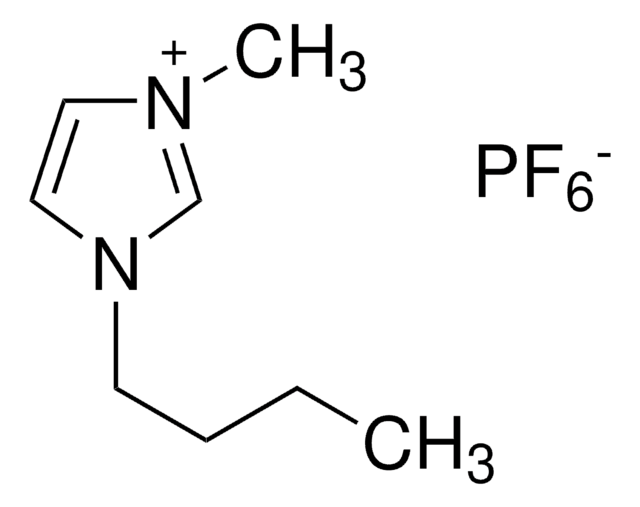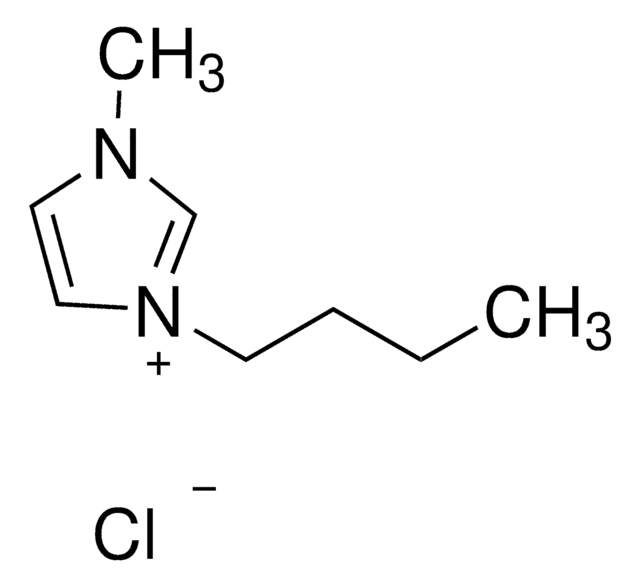900802
1-Butyl-3-methylimidazolium bis(trifluoromethylsulfonyl)imide
≥99%, H2O <500 ppm
Sinónimos:
1-Butyl-3-methylimidazolium bis(trifluoromethanesulfonimide) salt, 1-Butyl-3-methylimidazolium bis(trifluoromethanesulfonyl)amide, 1-Butyl-3-methylimidazolium bis(triflyl)imide, BMIIm, BMIM TFSI
About This Item
Productos recomendados
Nivel de calidad
Análisis
≥99%
formulario
liquid
composición
H2O, <500 ppm
impurezas
≤500 ppm H2O
mp
1 °C
densidad
1.454 g/cm3
aplicaciones
battery manufacturing
cadena SMILES
CCCCn1cc[n+](C)c1.FC(F)(F)S(=O)(=O)[N-]S(=O)(=O)C(F)(F)F
InChI
1S/C8H15N2.C2F6NO4S2/c1-3-4-5-10-7-6-9(2)8-10;3-1(4,5)14(10,11)9-15(12,13)2(6,7)8/h6-8H,3-5H2,1-2H3;/q+1;-1
Clave InChI
INDFXCHYORWHLQ-UHFFFAOYSA-N
¿Está buscando productos similares? Visita Guía de comparación de productos
Descripción general
Aplicación
Producto relacionado
Palabra de señalización
Danger
Frases de peligro
Clasificaciones de peligro
Acute Tox. 3 Dermal - Acute Tox. 3 Oral - Aquatic Chronic 2 - Skin Corr. 1B - STOT RE 2 Oral
Órganos de actuación
Nervous system
Código de clase de almacenamiento
6.1C - Combustible acute toxic Cat.3 / toxic compounds or compounds which causing chronic effects
Clase de riesgo para el agua (WGK)
WGK 2
Punto de inflamabilidad (°F)
Not applicable
Punto de inflamabilidad (°C)
Not applicable
Elija entre una de las versiones más recientes:
Certificados de análisis (COA)
¿No ve la versión correcta?
Si necesita una versión concreta, puede buscar un certificado específico por el número de lote.
¿Ya tiene este producto?
Encuentre la documentación para los productos que ha comprado recientemente en la Biblioteca de documentos.
Los clientes también vieron
Artículos
Dr. Sun reviews the recent advances in solid-state rechargeable batteries and cover the fundamentals of solid electrolytes in solid-state batteries, the theory of ion conduction, and the structures and electrochemical processes of solid-state Li batteries.
Ionic Liquids Based Electrolytes for Rechargeable Batteries
Nuestro equipo de científicos tiene experiencia en todas las áreas de investigación: Ciencias de la vida, Ciencia de los materiales, Síntesis química, Cromatografía, Analítica y muchas otras.
Póngase en contacto con el Servicio técnico













